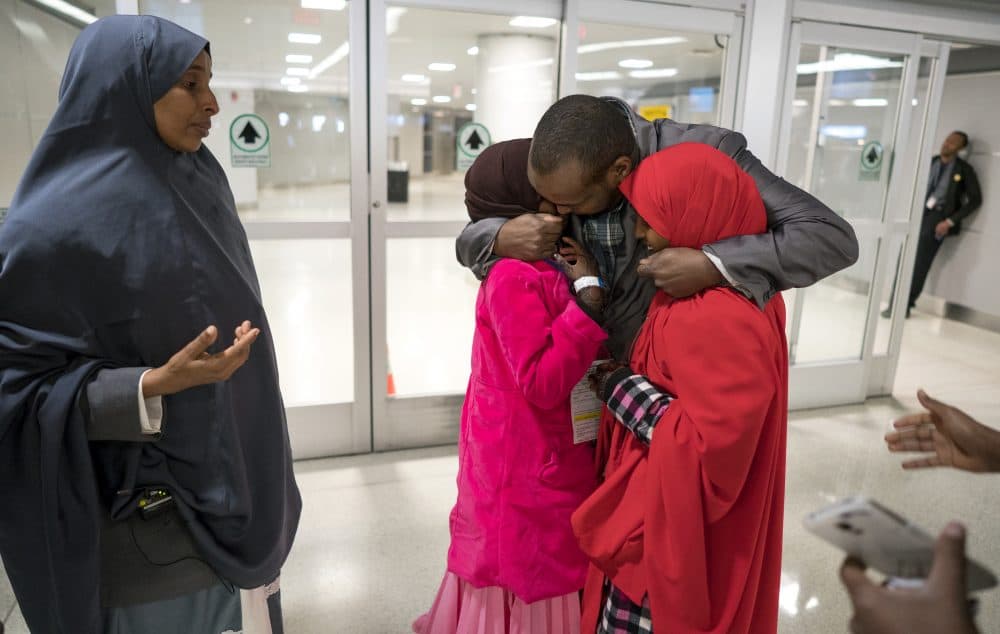Advertisement
Commentary
Forensic Psychiatrist: 'Extreme Vetting' Of Immigrants Won't Work

Last week, courts blocked President Trump's immigration ban 2.0, supposedly an upgraded version of the January original. Although some details were changed in the second ban, it was still framed as a temporary measure, lasting only until, as Trump said during the campaign, "our country's representatives can figure out what is going on." Essentially, he is claiming that in a few short months, “extreme vetting” will dramatically improve our ability to detect foreign threats of violence.
As a forensic psychiatrist with expertise in violence risk assessment, I can assure you that this isn’t true. A perfect system isn’t coming anytime soon — if ever. Predicting violent acts is extraordinarily difficult, and the current science leaves much to be desired.
When designing a test to detect a condition with a low base rate -- in this case, a mass violent attack -- one needs a very sensitive and specific test that will neither miss any cases nor produce false positive results. Right now, we don’t have such a test.
At its core, “extreme vetting” means systematically assessing each potential immigrant’s risk of committing an act of violence in the United States. Law enforcement agents, not forensic psychiatrists, conduct these assessments, but the principles they use are similar to those employed in psychiatrist risk assessment. Typically, risk assessment involves reviewing documents, interviewing the individual and talking to people who know them well. Years of scientific study have taught us to look for factors that are associated with an increased risk of violence. Some of these risk factors are historical. Has an individual, for example, been violent in the past or had behavior problems as a child? Others have to do with an individual’s current status and future plans: Is he or she contemplating violence? How does he or she handle stress? Is he or she abusing drugs or alcohol?
In all risk assessments, no one factor tells us with certainty whether a given individual will be violent. There are no computerized algorithms or easy “yes-no” answers. In each case, risk factors must be carefully assessed and weighed against protective factors — that is, things that make violence less likely, like strong family ties and good coping skills. Reaching a conclusion about an individual’s violence risk requires a high level of professional skill and judgment.
But even when our most skilled professionals use the best available assessment methods, research tells us that we are only right in our predictions of violence about 70 percent of the time. In practical terms, this means that our current scientific methods for assessing violence risk are better than flipping a coin, but not that much better. In 3 out of 10 cases, we will wrongly predict that a non-violent person will commit a violent act, or we will make the opposite mistake, failing to detect violence before it occurs.
Advertisement
These are discouraging numbers. But there are even more reasons to be pessimistic about our ability to detect potential terror attacks. Incidents of mass violence like terrorist attacks are extremely rare, making them more difficult to predict than violence that occurs with greater frequency, such as intimate partner violence or gang shootings. The scientific term for this is “low base-rate,” which simply means that the phenomenon being studied doesn’t occur very often. When designing a test to detect a condition with a low base-rate — in this case, a mass violent attack — one needs a very sensitive and specific test that will neither miss any cases nor produce false positive results. Right now, we don’t have such a test.
Furthermore, assessing potential immigrants from war-torn areas of the world poses some serious logistical challenges. Many of the records that an examiner would like to review may have been destroyed or never kept at all. Standardized tests of risk that apply to Americans and Western Europeans may not be relevant to those from other cultures. Interviews with potential immigrants can be challenging, as they are often conducted through multiple interpreters using video-conferencing technology. The end result is that our assessments of immigrants are potentially even more limited than our already imperfect system for evaluating violence in the English-speaking, American-born population.
Some may be naive enough to believe that a perfect screening system is right around the corner, but my experience with the murky, complicated process of assessing violence risk has taught me to be skeptical of any such promises.
Some may say that I’ve just made an excellent case for implementing a total immigrant ban. After all, if we can’t reliably determine which people are trying to hurt us, then we should keep them all out, right? That’s not what I mean at all. Putting aside the fact that for the past four decades no immigrant from the six countries listed in the executive order has carried out a fatal attack in the United States, my point is simply that any system of assessing violence is imperfect, and some degree of risk is inevitable. Even if we ban every immigrant from our country, all kinds of home-grown threats of violence — such as those that resulted in the shootings at Newtown and Charleston -- still exist. But what are we going to do, lock ourselves in our homes and live in fear forever?
Our country faces difficult decisions about immigration in the months ahead. Some may be naive enough to believe that a perfect screening system is right around the corner, but my experience with the murky, complicated process of assessing violence risk has taught me to be skeptical of any such promises. Whatever we as a nation decide about immigration, we shouldn’t make our choice based on the fantasy of a foolproof solution.
